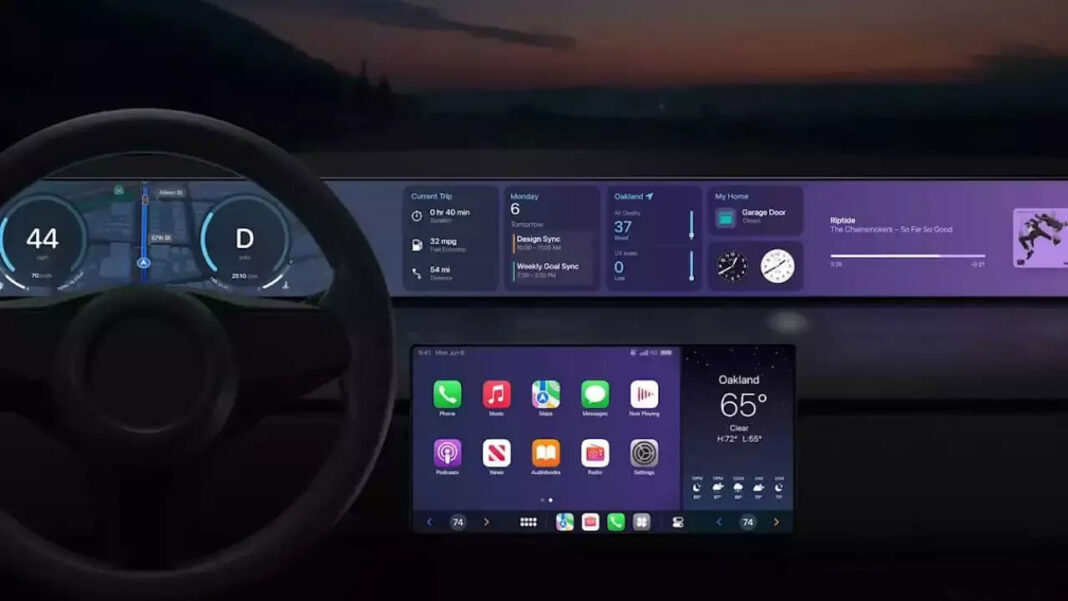NEW DELHI: From ChatGPT entering cars to massive dashboard displays for streaming and gaming and autonomous driving, cars of the future took a dramatic uplift at the global tech show in Las Vegas. German automaker Volkswagen announced plans to bring AI chatbot ChatGPT into its cars, integrated into its IDA voice assistant. The voice assistant, enabled by Cerence Chat Pro, is activated by saying “Hello IDA” or pressing the button on the steering wheel.
IDA automatically prioritises whether a vehicle function should be executed, a destination searched or the temperature adjusted. If the request cannot be answered by the Volkswagen system, it is forwarded anonymously to AI and the familiar Volkswagen voice responds. ChatGPT does not gain access to any vehicle data and questions and answers are deleted immediately to ensure the highest possible level of data protection, the automaker said during the ‘CES 2024’.
Volkswagen said it will be the first volume manufacturer to offer ChatGPT as a standard feature from the second quarter of 2024 in many production vehicles. The new chatbot is offered in conjunction with the latest generation of infotainment in the following models: ID. 7, ID.
4, ID. 5, ID. 3, the all-new Tiguan and the all-new Passat, as well as in the new Golf.
With ChatGPT, the IDA voice assistant can be used to control the infotainment, navigation, and air conditioning, or to answer general knowledge questions. In the future, AI will provide additional information in response to questions that go beyond this as part of its continuously expanding capabilities. Sony showcased an upgraded EV prototype car called Afeela.
Developed by Sony Honda Mobility, Afeela is a concept electric vehicle that features a huge dashboard display and autonomous driving capabilities. The most stunning aspect of the car is a huge ultrawide dashboard screen that extends the width of the car with the bumper packing another screen. Called Media Bar, the bumper screen can display information like a warning sign, birthday greetings and logos from popular movie and game titles.
The Afeela has big side mirrors, wireless phone chargers, and some more actual car specs. The all-wheel drive prototype has two 180kW motors (roughly 483 horsepower), a 91kWh lithium-ion battery pack, and up to 150kW fast DC charging. Electric car brand Polestar announced the integration of the Google built-in, a branded product that embeds Google apps and services directly into the company’s EVs.
The “Google built-in” product is powered by the tech company’s Android Automotive operating system and integrates Google automotive services directly into the vehicle. Android Automotive OS is modeled after its open source mobile operating system that runs on Linux, reports TechCrunch. The Polestar 2 and select Volvo Cars are the first vehicles to get new apps, including YouTube, Amazon Prime video as well as new features.
Bosch showed off two technologies in eye-tracking while driving: One will see that you have tired eyes and ask if you need an espresso when you arrive home. If yes, its connected technology will tell your fancy machine to have one ready. The other is far more complicated: Eye-tracking tech could be used during your drive to figure out what points of interest you’re looking at, and the car could offer contextual information.
It might then prompt you with the hours of operation of a nearby restaurant, or tell you the history of a castle on the horizon, reports TechCrunch. At the ‘CES 2024’, Hyundai Motor also announced it would expand HTWO, its existing fuel cell brand, into the Group’s hydrogen value chain business brand, and announced a ‘HTWO Grid’ solution that will accelerate the transition to a hydrogen society. In the production stage table, people at Hyundai booth looked at the resource-circulating hydrogen production technology, including two approaches: Plastic-to-Hydrogen (P2H) and Waste-to-Hydrogen (W2H), and a green hydrogen process.
They also learnt about green hydrogen that is produced by electrolysing water. Electrolysis plants operate on renewable energy sources, such as wind, solar and hydropower. As green hydrogen is produced by a carbon-free energy source, it neither emits polluting gases during combustion nor production, gaining attention as the ultimate clean energy source of the future, according to Hyundai.
(IANS) Also Read: AI begins telling bedtime stories to kids amid legal, ethical concerns Also Watch:.
From: sentinel
URL: https://www.sentinelassam.com/international/from-chatgpt-to-massive-dashboard-screens-ai-to-drive-cars-of-the-future-686562



